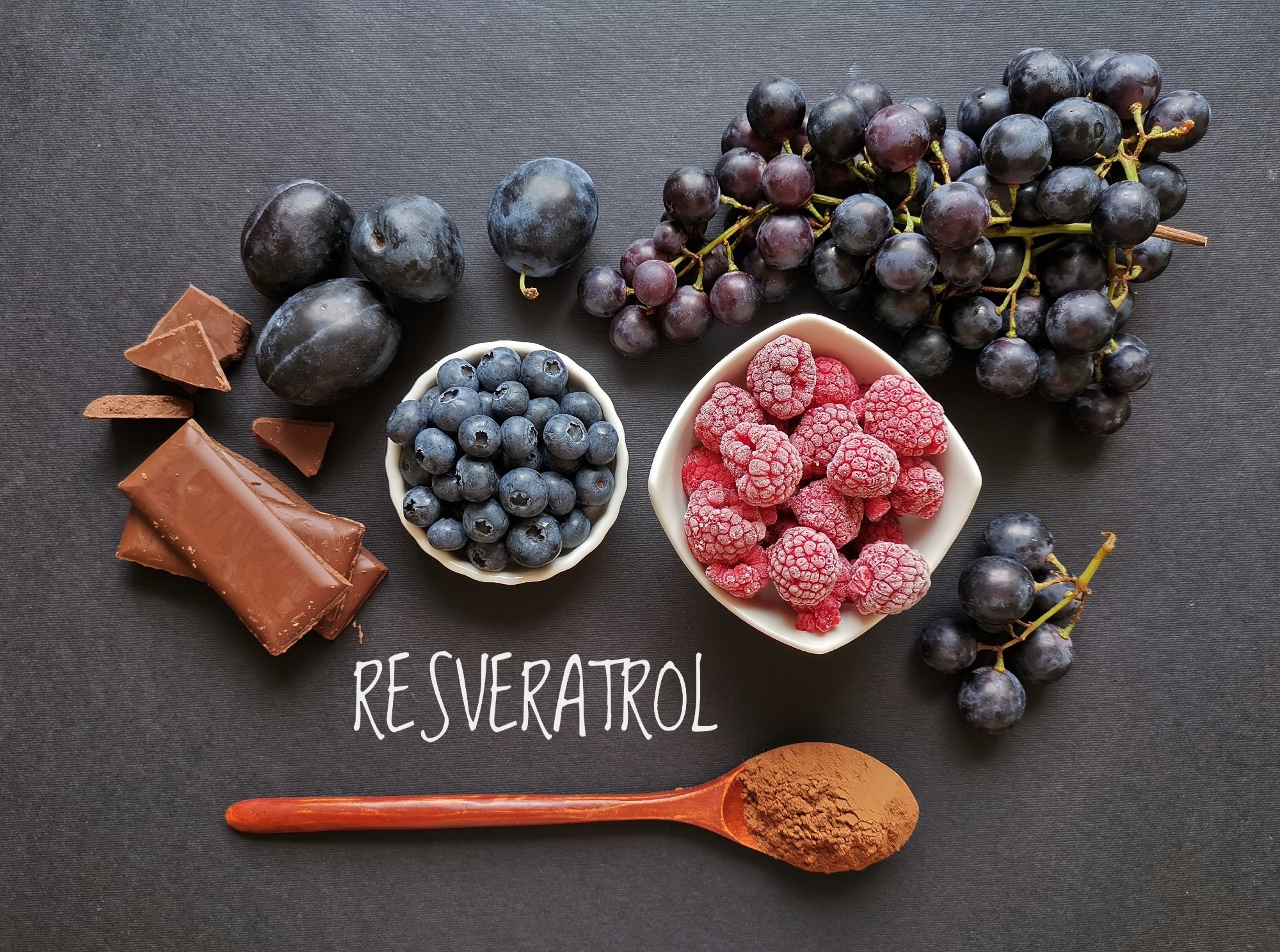Evaluating the effect of resveratrol-enriched bread in preventing early type 2 diabetes cardiomyopathy in vivo

In a recent study published in the Antioxidants Journal, researchers examined the effects of resveratrol-enriched bread on a diabetes model.
 Study: The Impact of Resveratrol-Enriched Bread on Cardiac Remodeling in a Preclinical Model of Diabetes. Image Credit: DanijelaMaksimovic/Shutterstock.com
Study: The Impact of Resveratrol-Enriched Bread on Cardiac Remodeling in a Preclinical Model of Diabetes. Image Credit: DanijelaMaksimovic/Shutterstock.com
Background
The use of diet is a highly effective non-pharmacological approach to prevent and manage cardiovascular diseases (CVDs). Trans-resveratrol (RSV), a natural compound present in grapevine Vinis vinifera, peanuts, and wine, has been approved for consumption as an ingredient at a maximum of 150 mg of RSV/day.
RSV has been found to possess various bioactivities, such as reducing lipid peroxidation, vasodilation, platelet aggregation, and blood pressure. RSV has positively affected individuals with diabetes, including improving cholesterol and triglyceride (TG) levels, regulating glucose levels, and protecting islet β-cells.
About the study
In the present study, researchers assessed the impact of RSV-enriched bread on preventing early type 2 diabetes cardiomyopathy.
A group of 48 three-week-old male Sprague Dawley rats was purchased. The animals were divided into four cohorts: two control and two experimental groups.
The study involved feeding control animals with plain bread (CB) and bread containing 10 mg/kg/day of RSV (CBR), while fructose-fed and streptozotocin-administered (fructose/STZ) subjects were given plain bread (DB) and bread with 10 mg of RSV/kg/day (DBR).
The experiment began with a one-week period of acclimatization, during which the subjects consumed a standard diet and plain water. The study involved replacing the drinkable water of DB and DBR groups with 10% fructose water for 14 days to reduce insulin sensitivity.
An intraperitoneal injection of STZ followed this. The CB and CBR control cohorts received plain water and vehicle injections instead of the STZ solution. During the fourth week of the experiment, the CB and DB groups were given a standard diet that included plain bread.
Meanwhile, the CBR and DBR groups were provided with a standard diet that contained bread enriched with RSV.
Blood samples were obtained from the rats' tail veins to measure their glucose levels. Measurements were recorded at two different time points, two hours and 12 hours after a meal. The first time point was during the fourth week of the experiment, one week post-STZ injection.
The second time point was during week six, two weeks after the introduction of a standard diet with bread. The experiment included monitoring body weight, food, and water intake. Food and water consumption in each cage were measured to determine intake.
Results
One mortality was reported in the fructose/STZ group, involving one animal fed plain bread. No other groups had any mortalities.
Animals treated with fructose/STZ showed a significant increase in water and food intake, with water intake increasing by eightfold and food consumption increasing by onefold starting from the third week. The animals exhibited high urine excretion, which could contribute to the onset of diabetes among fructose/STZ rats.
A 23% decrease in body weight was observed in the fructose/STZ animals. The study found that the gastrocnemius mass was significantly lower in both DB and DBR groups than in the control group, with 40% and 30% reductions, respectively.
Furthermore, fructose/STZ rats did not experience any growth impairment, as evidenced by no alterations in tibia length. However, they had limited weight gain, reflected in a lower body weight/tibia length ratio. This ratio significantly rose when the rats were fed an RSV bread diet. Fructose/STZ animals had significantly lower heart weight and heart weight/tibia length ratio.
Glucose (Glc) blood levels were monitored in fructose/STZ rats during the fourth and sixth weeks of the experiment to confirm the development of hyperglycemia under fasting and feeding conditions. Fasting Glc levels between 200 and 250 mg/dL indicate prediabetes in rats, while levels equal to or exceeding 250 mg/dL indicate diabetes.
During weeks four and six, fructose/STZ rats exhibited feeding glycemia levels exceeding 200 mg/dL, while the control groups maintained around 141 mg/dL. The fructose/STZ groups maintained fasting Glc levels below 200 mg/mL at week six.
The study found that rats fed with fructose/STZ had Glc levels that were twice as high as those fed with RSV bread, indicating fasting hyperglycemia at the end of the experiment. The circulating Glc concentrations in fructose/STZ rats display high variability, which suggests acute glucose fluctuations in the early stages of diabetes or dysglycemia.
All animals in the groups had similar TG serum levels, and there were no significant variations.
Conclusion
The study findings showed that a functional bread containing RSV could prevent early systemic and cardiac adaptations related to type 2 diabetes within a preclinical model.
The study found that feeding fructose/STZ Sprague Dawley rats with RSV-enriched bread resulted in notable enhancements in their well-being, particularly in decreased body weight loss and polydipsia. RSV has been found to have preventive influences on the heart, specifically against fibrosis development and maladaptive cardiac remodeling.
The researchers believe RSV bread could be a useful dietary intervention for managing early type 2 diabetes and its related complications.
Silva, A. et al. (2023) "The Impact of Resveratrol-Enriched Bread on Cardiac Remodeling in a Preclinical Model of Diabetes", Antioxidants, 12(5), p. 1066. doi: 10.3390/antiox12051066. https://www.mdpi.com/2076-3921/12/5/1066
Posted in: Medical Science News | Medical Research News | Medical Condition News
Tags: Blood, Blood Pressure, Bread, Cardiomyopathy, Cholesterol, Compound, Diabetes, Diet, Fasting, Fibrosis, Food, Fructose, Glucose, Glycemia, Heart, Hyperglycemia, in vivo, Insulin, Mortality, Platelet, Preclinical, Prediabetes, Resveratrol, Triglyceride, Type 2 Diabetes, Weight Loss, Wine

Written by
Bhavana Kunkalikar
Bhavana Kunkalikar is a medical writer based in Goa, India. Her academic background is in Pharmaceutical sciences and she holds a Bachelor's degree in Pharmacy. Her educational background allowed her to foster an interest in anatomical and physiological sciences. Her college project work based on ‘The manifestations and causes of sickle cell anemia’ formed the stepping stone to a life-long fascination with human pathophysiology.
Source: Read Full Article